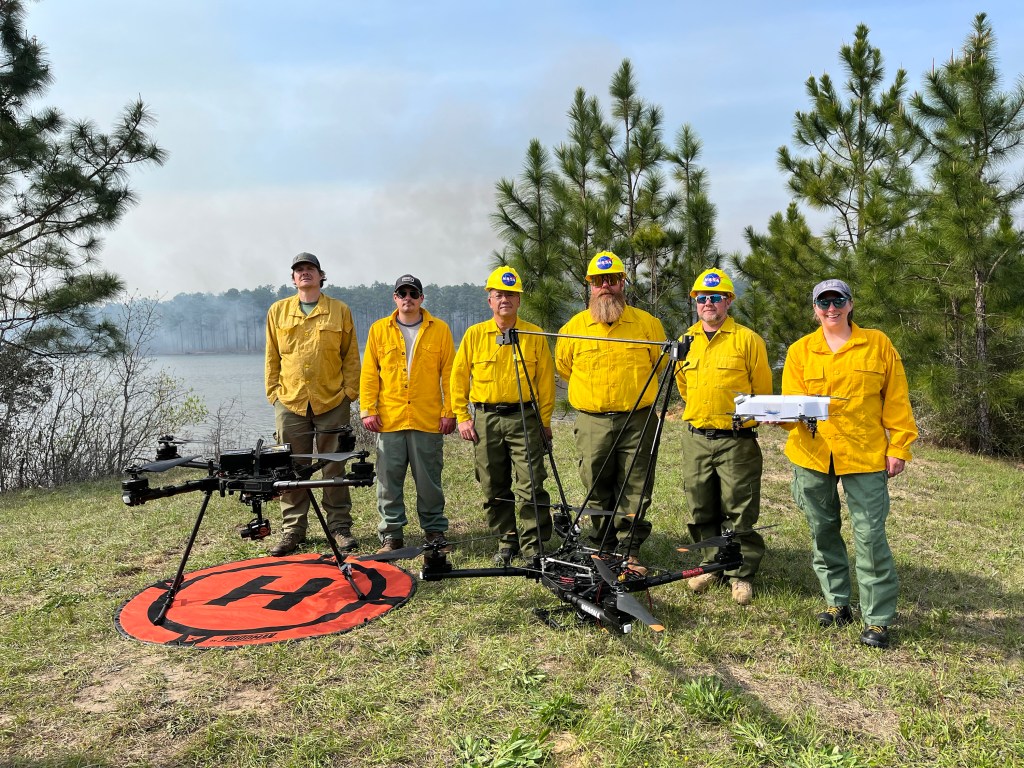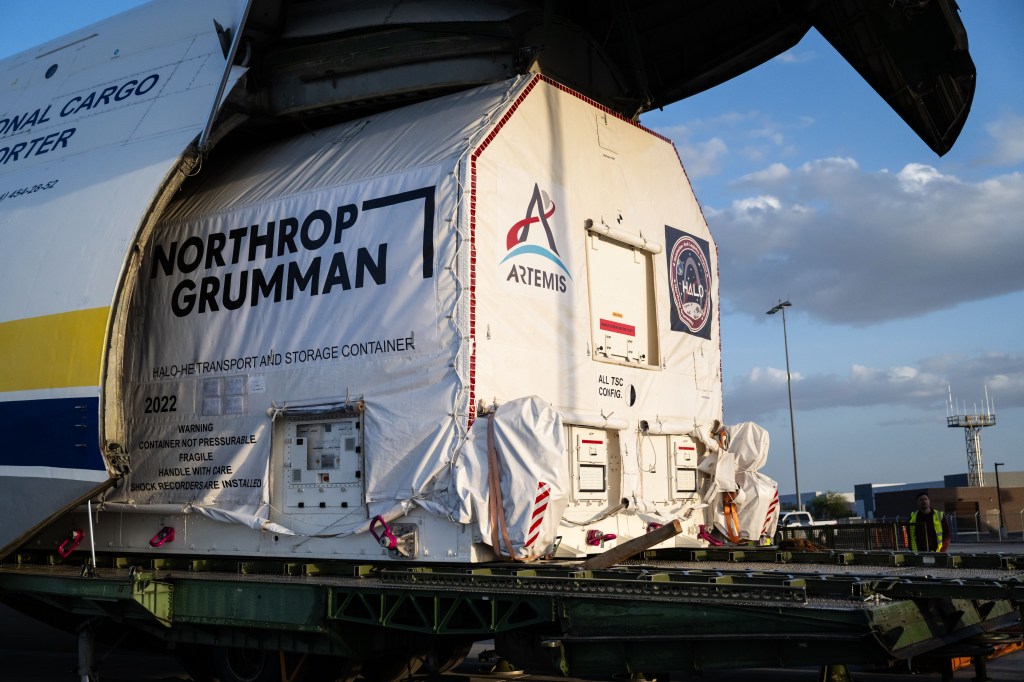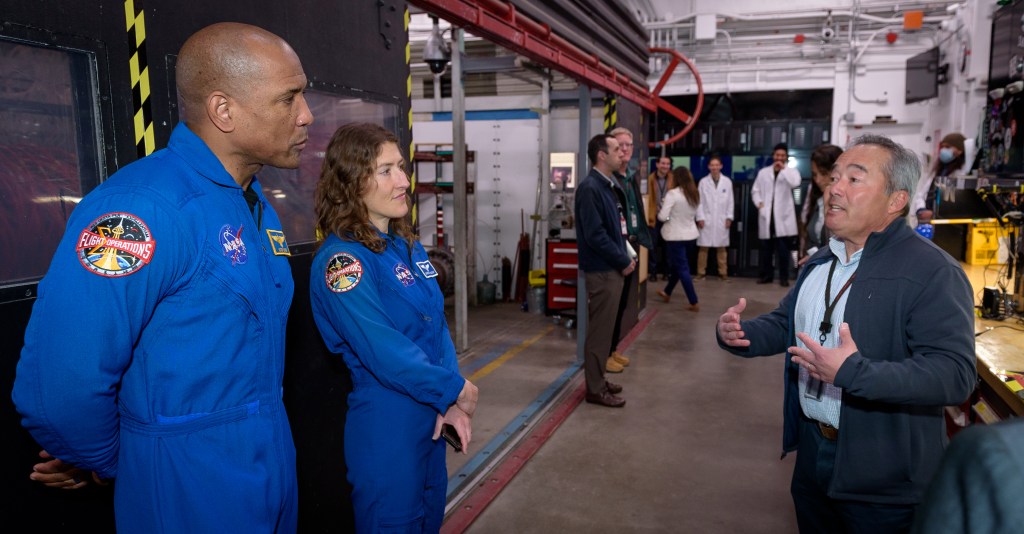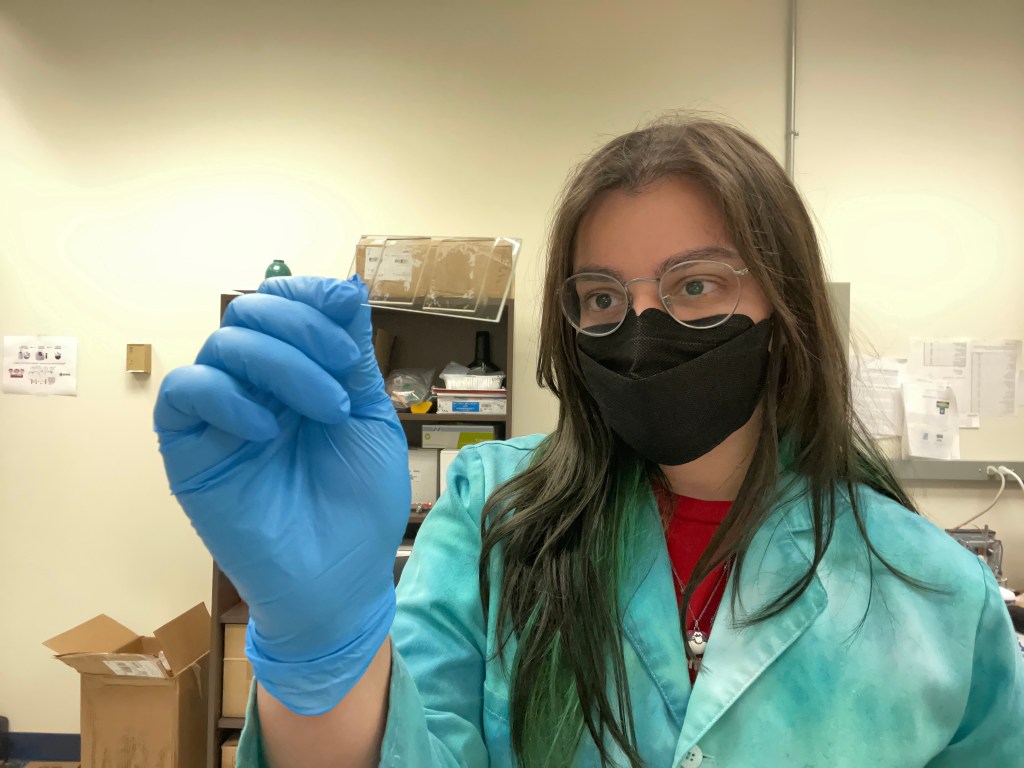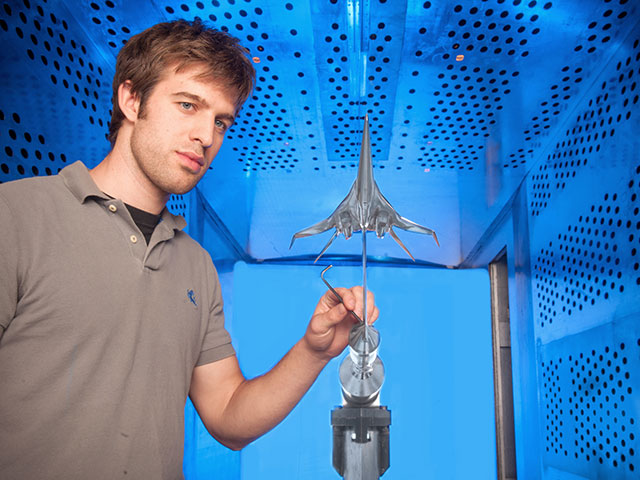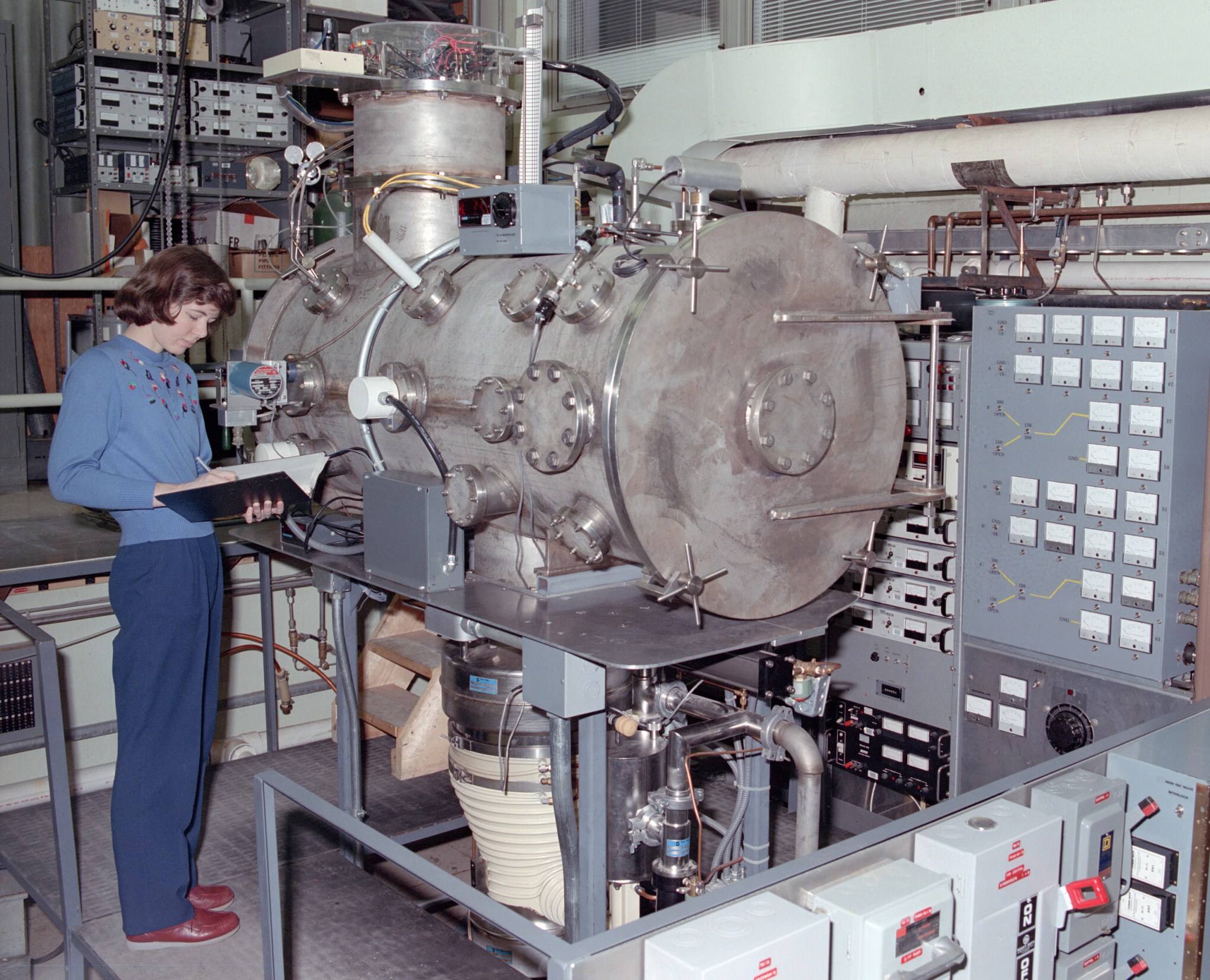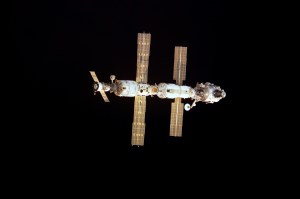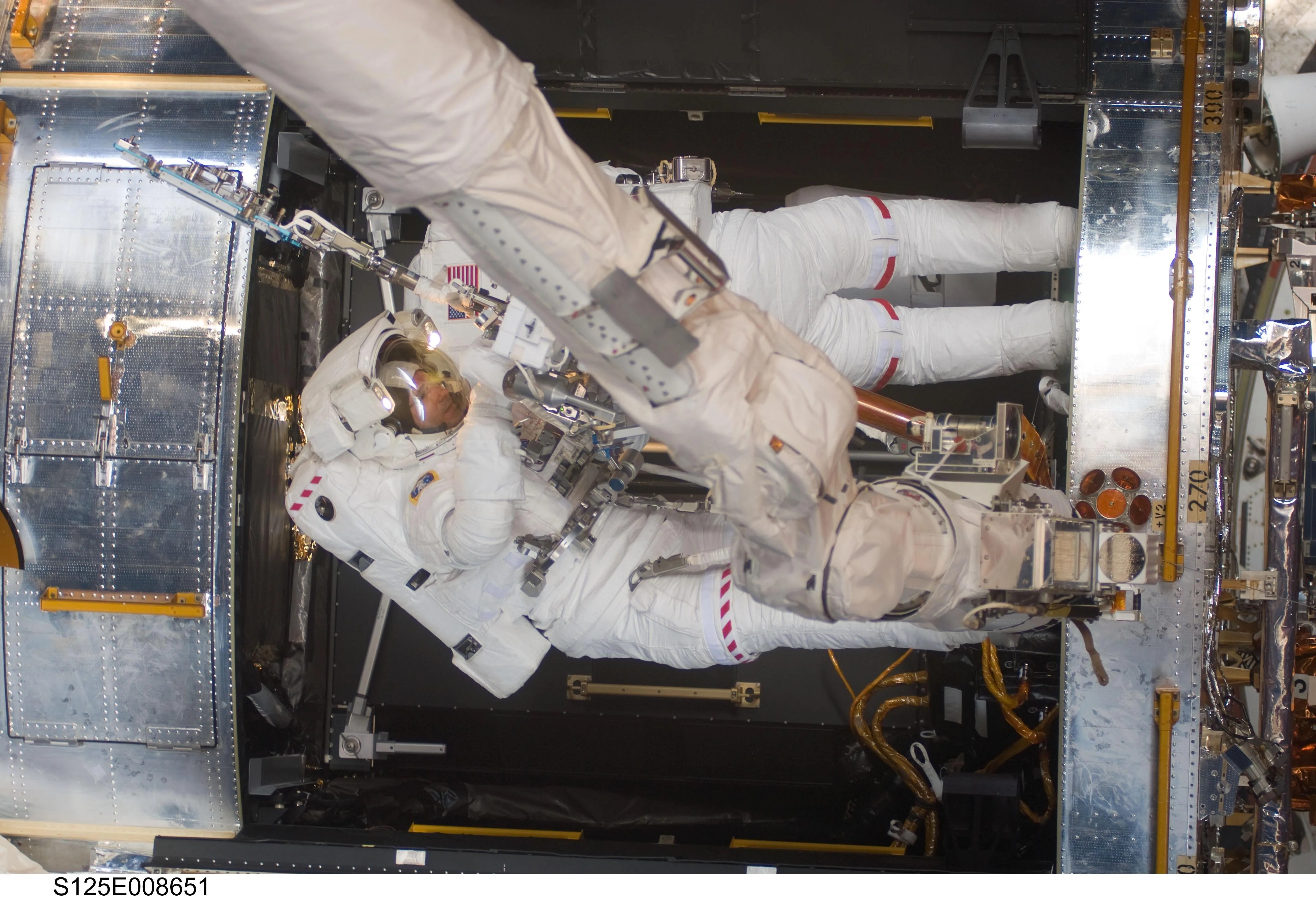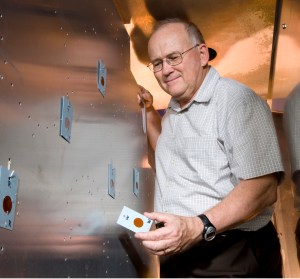The Hubble Space Telescope has been a tremendous success for nearly three decades, producing unprecedented views of the solar system and generating key information on the origins of the universe. And at a critical time in its history, materials experts from NASA’s Lewis Research Center (now Glenn) played an essential role in securing Hubble’s legacy.
Shortly after Hubble’s deployment in April 1990, scientists discovered an improper curvature of the lens that caused the new telescope to produce blurry images. In addition, the dramatic temperature changes associated with the passing in and out of sunlight during orbit caused a problem with the telescope’s pointing system. The temperature cycles set off expansion and contraction of the solar array’s metal poles, or booms, causing the solar arrays to jitter, which disrupted the telescope’s service for nearly a third of the time on each orbit.
NASA planned a December 1993 servicing mission to Hubble to install new optical equipment, gyroscopes and solar arrays. The replacement arrays included metallized Teflon thermal shields covering the solar array booms to combat the temperature cycles. NASA engineers wanted to explore the use of coatings to protect the thermal shields from the damaging ultraviolet radiation and atomic oxygen present in space.
For the specialized coatings, NASA turned to our Electro-Physics Branch. In 1992, they were given six months to determine the effect of ultraviolet radiation and atomic oxygen exposure on a range of candidate coatings.
The researchers used specialized vacuum chambers to recreate the conditions that Hubble would experience over a five-year period. They first exposed the samples to four weeks of high-intensity ultraviolet light, then subjected them to atomic oxygen and ultraviolet light simultaneously, followed by thermal cycling.
The extensive testing revealed that certain coatings failed unexpectedly. In the end, the team concluded that the uncoated insulation provided the most resilient thermal shield. The new thermal shields successfully reduced the thermal-induced jitter from occurring on the Hubble replacement solar arrays and combined with new flight software, fully eliminated the impact.
On January 13, 1994, NASA Administrator Dan Goldin and Senator Barbara Mikulski announced that the recent Hubble Space Telescope Servicing Mission was a success. “What a wonderful victory this is for the Hubble team of astronauts, astronomers, scientists and engineers,” Mikulski said.
NASA recognized the Hubble Thermal Shield Durability Evaluation Team’s efforts with a group achievement award. Team members contributed to each of the four follow up servicing missions, and they served on a review board in 1997 that analyzed the multi-layer insulation failure on the body of the telescope helping to test and identify replacement materials.
Robert S. Arrighi
NASA’s Glenn Research Center


